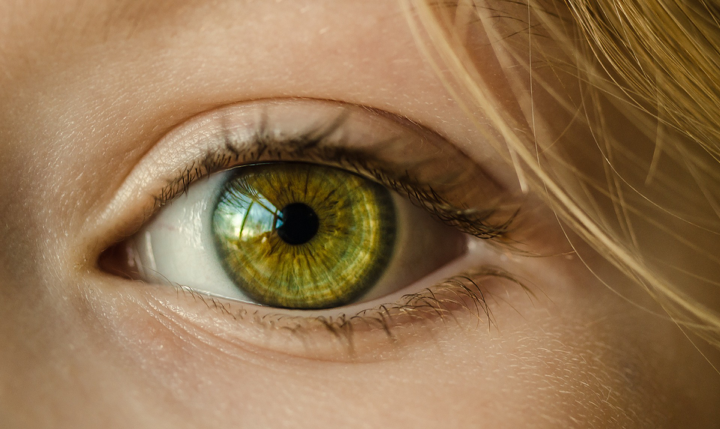 Health & Physiology
Health & Physiology
Growing human retinal organoids to understand development of the human eye
The cone photoreceptors of the human eye detect blue, red, or green light. How these cells develop in humans is poorly understood. To address this question, we differentiated human stem cells into mini-retinas, called “organoids”. Our findings clarify the human eye development and provide a potential therapeutic strategy for vision disorders including macular degeneration.

Our laboratory is interested in how the cells that "see" color are made. There are three types of color-detecting cells that sense red, green, or blue light. We cannot study how these cells are made in developing human babies, so we take human stem cells and direct them to become retinal tissue. These retinas grown from stem cells are called retinal organoids. One thing that amazed us was that these retinal organoids grow in a manner that is very similar to real human retinas: the cells are made at the same times, the cells look the same, and the genes work in the same ways.
Since human development takes 9 months, this posed a particular challenge - could we study human development in organoids grown in a dish on fetal timescales? We took this as a challenge and grew these organoids for a full year, checking their development at different times. We found that the blue cells were made first and the red and green cells were made later - it is as if there is a timer for when these cells are generated. What is particularly remarkable is that the growing organoid knows what to do. After initially directing the stem cells to become retinal tissue, we do not add any special chemicals or signals, the organoids make these cells themselves!
We next sought to figure out how the timer worked - how are the blue cells made first, and the red and green cells made later? Pioneering work in mice, fish, and chickens, led us to test a set of genes involved in the function of thyroid hormone. We formed the hypothesis that thyroid hormone function was low early to make the blue cells, and high later to make the red and green cells. Perhaps the most beautiful results of our work came when we manipulated thyroid hormone function. We used CRISPR to knock out the receptor for thyroid hormone and generated human organoids with only blue cells. We then added thyroid hormone and generated human organoids with only red and green cells. These striking results told us that thyroid hormone was important for making the color-sensing cells in our eyes.
There was one last challenge: if thyroid hormone controls the development of our color-sensing cells, how is it made - there is no thyroid gland in the dish!! The eye itself must control thyroid hormone levels. To answer this question, we looked at what genes were on or off during eye development for a full year. We found that genes that degrade thyroid hormone were on early to make the blue cells, and genes that activate thyroid hormone were on late to make the red and green cells.
This work is important because it is the first to use human organoid technology to study the mechanisms of human development on fetal timescales. The timescale of 6-12 months is particularly challenging since these experiments are done in antibiotic-free conditions and we must be extremely careful to prevent contamination that can destroy the organoids. It takes a special type of scientist to conduct these experiments. Kiara Eldred, Sarah Hadyniak, and Kasia Hussey, had to be very careful and mentally tough, knowing that any misstep could jeopardize their work. These scientists are very intelligent and they made smart decisions to ensure their success. Johns Hopkins is an extremely collaborative environment and this work could not have happened without help from Don Zack and Karl Wahlin.
To conclude, this work has important implications for our understanding of human development and potential treatments for vision disorders. Vision disorders had been linked to alterations in levels of thyroid hormone in premature babies previously. Our work directly shows the mechanism and cause, and suggests possible treatments to prevent these problems. The next big challenge is taking our findings and using them to provide therapy to people with visual disorders and diseases. Since we can now make retinas with only blue or only red and green cells, we hope to use this technology for therapeutic applications involving these color-detecting cells. In particular, we hope to use this system to treat macular degeneration, the leading cause of vision loss.
Original Article:
K. C. Eldred et al., Thyroid hormone signaling specifies cone subtypes in human retinal organoids. Science 362, (2018)Next read: Mitochondria as microlenses in the eye – the evolution of an improved camera sensor by John M. Ball , Wei Li
Edited by:
Massimo Caine , Founder and Director
We thought you might like
More from Health & Physiology
How obesity can improve the efficacy of cancer treatment: role of the sex hormone estrogens.
Dec 3, 2025 in Health & Physiology | 3.5 min read by Eloïse Dupuychaffray , Carole BourquinTobacco smoking and other exposures shut off cancer-fighting genes
Aug 31, 2024 in Health & Physiology | 3 min read by Jüri Reimand , Nina AdlerA hidden clock that times cytoplasmic divisions
Aug 30, 2024 in Health & Physiology | 3 min read by Cindy OwWhen two kinases go for a dance
Aug 2, 2024 in Health & Physiology | 4 min read by Ioannis Galdadas , Francesco Luigi Gervasio , Pauline JuyouxAwakening the thymus to cure SARS-CoV-2 infection: a matter of genes
Jul 27, 2024 in Health & Physiology | 3.5 min read by Stefano Marullo , Cheynier RemiEditor's picks
Trending now
Popular topics


